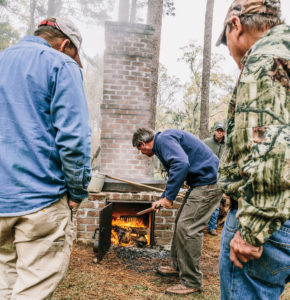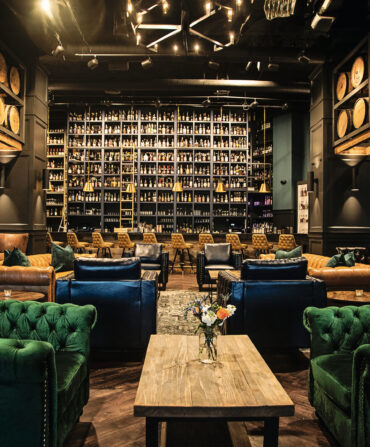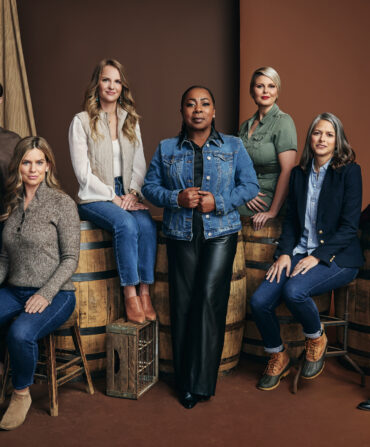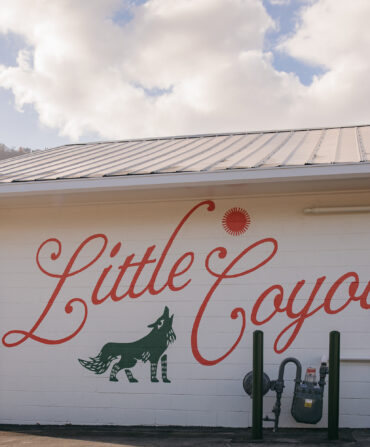Food & Drink
Cane Syrup: The Forgotten Harvest
Once a Southern staple, cane syrup has mostly fallen by the wayside. But for this diehard bunch in South Carolina, making it is just as much fun as tasting it
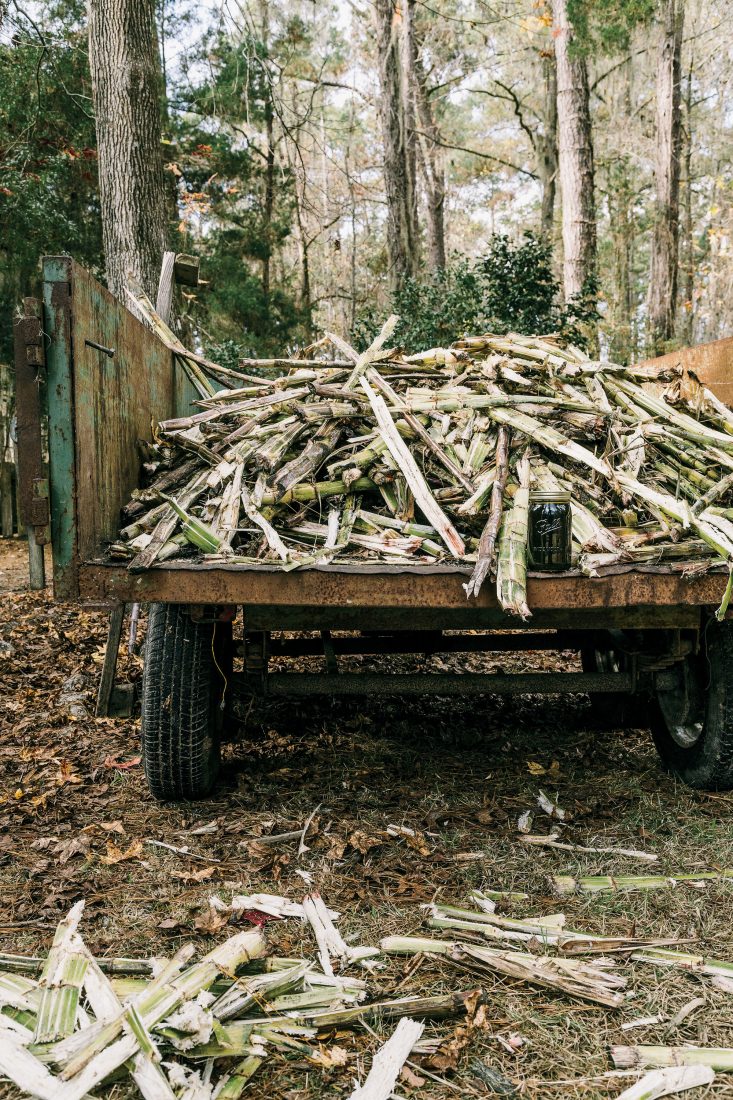
Photo: Peter Frank Edwards
It is a truth universally acknowledged that a bunch of men standing around a fire must be in want of some banter. There were about a dozen of us gathered deep in the Carolina woods, and the fire blazed. When I asked one of the older men what his role was here, he said he was a project “consultant,” which, he explained, “means I ain’t doin’ a lick of work.” A burst of laughter cleared the glade of squirrels.
One guy kicked the dirt and confessed that he didn’t really understand a whole lot about what we were doing. To which another consultant started in on a story—about a young fellow, newly hired at a stable, who confessed to the foreman that he didn’t know a lot about horses. “Yeah,” said the foreman, “stay around here long enough and you’ll find out how little all these other people know.” Once again, the squirrels bolted for the far woods.
Yet it was probably around a fire like this one a few aeons back where the first mysteries of cooking dinner blazed into revelation. And if that’s the case, then not much has changed except the location. It was a brisk fall morning, and we were way down a dirt road beneath some oaks and tall pines on Lavington Plantation in South Carolina’s Lowcountry. The rowdy fire howled inside a brick hearth built to support a massive kettle—five feet in diameter and weighing about three hundred pounds—bubbling with eighty gallons of sugarcane juice, which would take some five hours to boil down to eight gallons of cane sugar syrup. The process involved a lot of watching. At various moments throughout the day, the whole lot of us sometimes just stood there, staring into the rolling boil, seized by a silent reverie Herman Melville might recognize.

Photo: Peter Frank Edwards
Moss-draped trees line the road to Lavington.
It’s hard to say which is more mesmerizing, the reddish depth of the juice bursting onto the surface in an amber lather, or just the kettle itself. I say “kettle” but that somehow puts in mind a cauldron one might see in a high school production of Macbeth. There is no good English word for the simple beauty of this stunning object. It is pure cast iron and shaped like an outsized cereal bowl. You could wash a couple of children in this thing or use it as a birdbath for pterodactyls. The curve itself is enough to pull you in, a shape that grabs the eye like the slope of a horse’s back or the gunwale of a schooner.
Four hundred years ago, the European longing for the sweetness in this kettle got the first colonial economy going, and was part of what set the slave trade in the Americas on a trajectory that would last for centuries. There is a lot of history in this kettle. But for much of the last hundred years, cane sugar syrup was the main source of sweetness in small communities when everything else was too expensive. By lunchtime, we were all looking into the foaming broth to catch that magic moment when the concentrated liquid would quickly thicken into syrup, but honestly, I was looking to see if there was anything else in that kettle besides nostalgia.
My friend Jimmy Hagood and I have, off and on, been poking around old Charleston recipes and fading cooking techniques, mostly for fun, looking to find old flavors that somehow got lost. Hagood used to be an insurance agent, but one thing led to another and now he’s one of the Lowcountry’s leading pit masters, and his company, Food for the Southern Soul, sells all kinds of mainstays from grits and rice to Charleston specialties like benne wafers and Jerusalem artichoke relish. A while back, for instance, he started fooling around with jerky. When I joined him in the kitchen one time, it was a revelation to learn just how much has been lost between what everyone’s grandparents used to make and that crud dangling by the cash register at the gas station. A lot. Real jerky was once the vehicle for a host of complex marinades and spicy vinegars and varieties of smoke—before it got streamlined into a greasy finger of sodium nitrite.
This time, Hagood invited me out to his uncle’s place, where once a year they boil the juice into syrup. And that syrup is said to be milder and more complex than the potent bullet of sweet that is granulated sugar. So, I wanted to know, was there something real here, something different in that kettle that our grandparents might recognize? Or was this just an exercise in old-timey fun?
By the time I showed up, the general task of the day was already half accomplished: A quarter acre of sugarcane, about a thousand stalks, had been cut in about three hours the day before by the manager here, Ben Ferguson. He was one of three—as I counted them—head cooks in charge of this brew. “When I grew up, every year the whole community would come together and make cane syrup,” he told me. “For a lot of people there was no granulated sugar, and if there had been, they couldn’t afford it.” After the stalks were cut, they were run through a cane press—two heavy iron drums with just a crack of daylight between them hooked up to a tractor engine. The cane was mashed and then the juice strained through a T-shirt laid atop a croker sack and into a bucket. By mid-morning, the juicing was done and the eighty gallons from the thousand stalks were in the kettle.
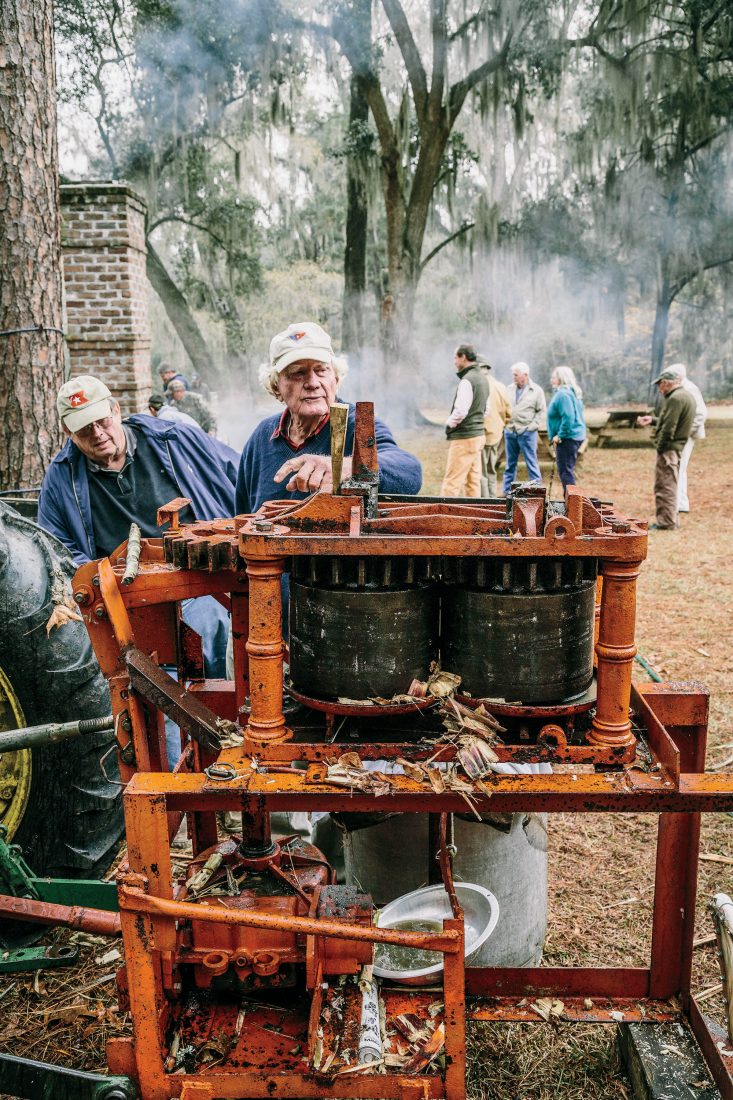
Photo: Peter Frank Edwards
Maybank works the press, crushing and squeezing juice from fresh cane.
The third cook on this endeavor was David Maybank, who owns these woods and has been the motivating force behind making the syrup since the late 1990s.“I was in Brazil, and the drink of choice turned out to be cane juice,” Maybank told me. “On every street corner there was a small cane mill running off a little three-horsepower gasoline engine.” They poured it directly over ice. “It beat out Coca-Cola two to one.”
At eighty-two, Maybank is a soft-spoken man whose Geechee lilt is perfect Charlestonian, rare to hear
these days. He wore a cap out of which sprouted an unruly head of hair, still with traces of red. His easygoing manner belies a stubborn sense of determination. In his late sixties, he talked up his desire to sail around the world, and then one day in 1997, he and some friends weighed anchor, returning the following spring, in 1998.
While they were moored in Salvador, Brazil, he encountered the syrup, and Maybank remembered old-timers in South Carolina who used it during the Depression. “It was the only way to sweeten your coffee,” he said. But he actually loved the taste, so he bought one of those street-corner presses and shipped it back to Lavington. He planted his own cane, and he and Ferguson have since been learning the nuances of making cane syrup. “We probably made every mistake you can make,” Maybank said.
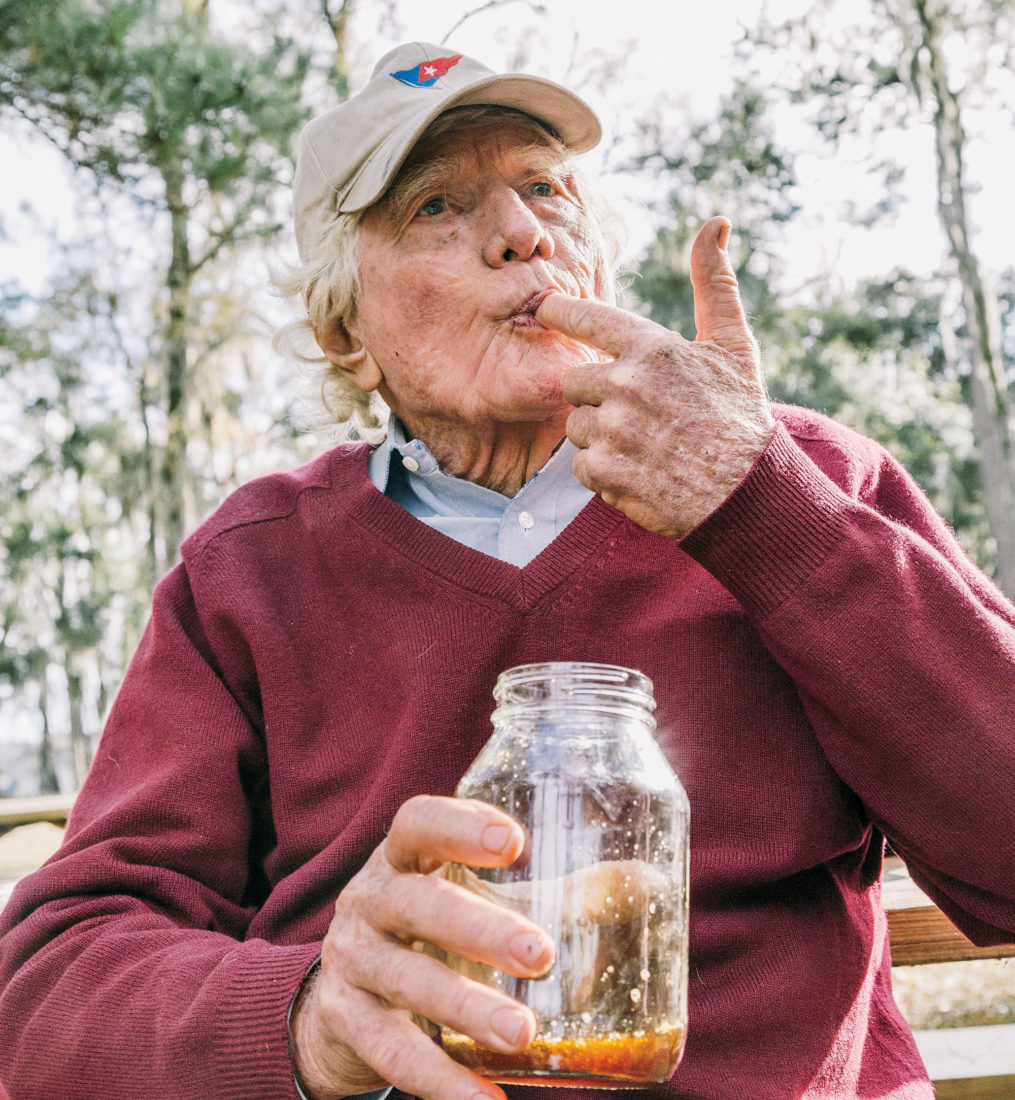
Photo: Peter Frank Edwards
Liquid Gold
David Maybank samples the goods.
Ferguson was eager to explain the process. Sugarcane is a perennial, but the cane starts to lose its sweetness in about the third year, so you have to buy new seed cane and lay it down. Each section of a cane stalk has a little eye in it. Seed cane is, simply, fresh-cut stalks laid end to end and buried. Each eye sends up a fresh stalk. “You have to overlap them a little bit because the end pieces aren’t reliable,” he said, in a tone suggesting that every tidbit he knew about cane was learned the hard way, by trial and error. A lot of people nourish their cane with nitrogen, but Ferguson said, happy to spare me a world of pain: “I top dress it with cottonseed meal.”
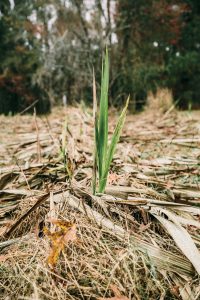
Photo: Peter Frank Edwards
Raising Cane
Seed cane sprouts at Lavington.
After returning from Brazil, Maybank tracked down a few folks in Reevesville, South Carolina, who made syrup the old-fashioned way, growing their own cane and cooking it down once a year, usually around Thanksgiving. They gave him some pointers and got him started. For him, it wasn’t about nostalgia but about taste.
“I actually just like to put it right on my grits,” he said, almost sheepishly, as if he were giving away a state secret.
Another senior syrup consultant, Stewart Walker, who occasionally contributed a blue joke to the fire, said, “Putting it on biscuits is heaven.” Hagood looked up from the kettle and said, “Well, Stewart, that’s as close to heaven as you’re ever gonna be.” (And the squirrels were gone.) Afterward, another senior consultant leaned in confidentially: “I cannot stand the stuff.” Maybank later told me that one of his best friends, Rufus Barkley, who was the leading force behind the Reevesville expeditions and getting the entire annual operation going, declared cane syrup on par with a really fine “axle grease.” So opinion is divided.
Cane “syrup” is another term (like “kettle”) that sets the mind off in the wrong direction. We think of maple syrup and that sticky texture and candied density. But cane syrup is naturally thinner and only mildly sweet. It doesn’t share with either maple syrup or Dixie crystals that tooth-aching bolt of super-refined sugar. The five-pound bag one buys in a store involves a series of processes required to extract and condense the sweet into those intense granules. But cane sugar syrup, the first boiling of cane juice, is where it all starts. “What molasses is,” Hagood said, “is the second cook. You cook it again to extract the sugar out, and that’s why molasses is not as sweet. And what blackstrap molasses is, is a third cook.”
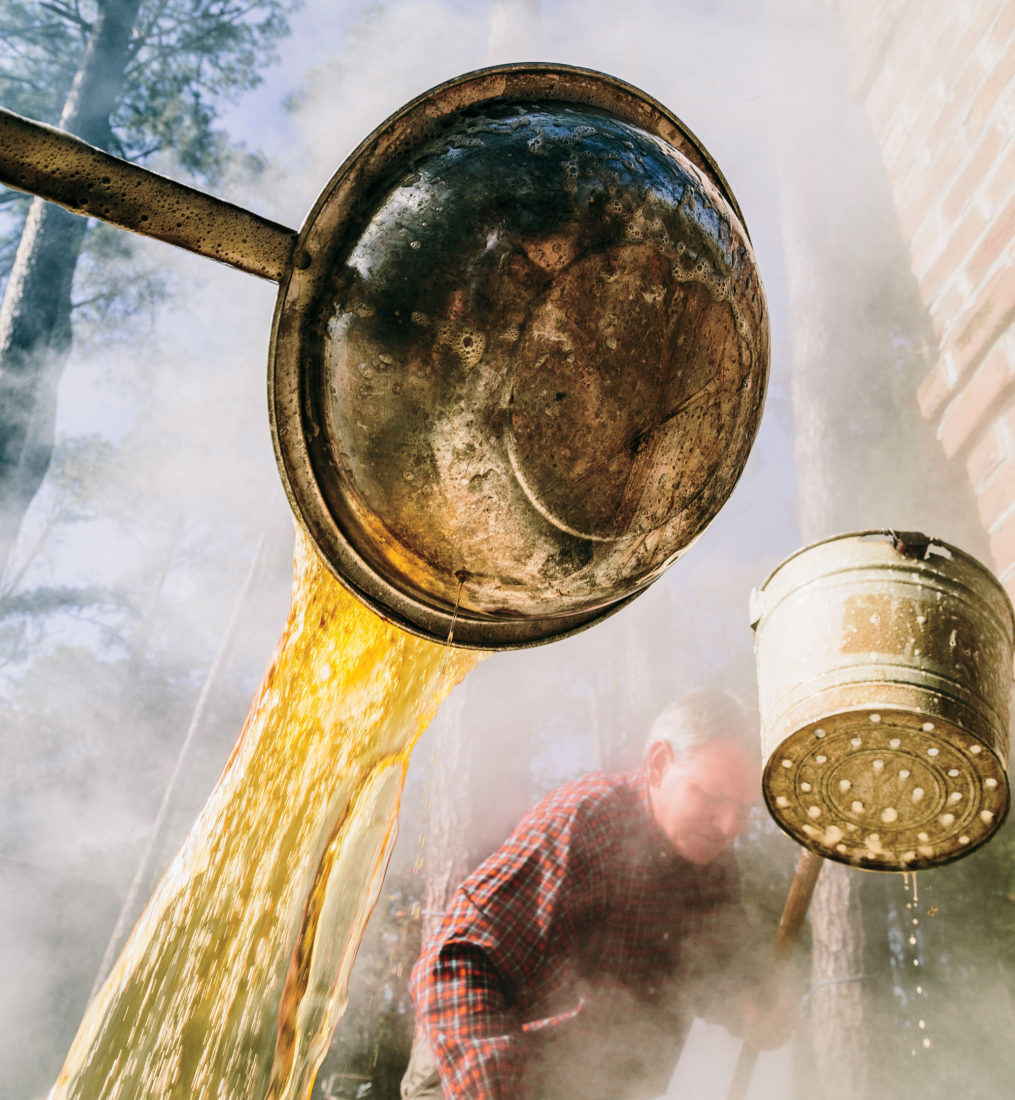
Photo: Peter Frank Edwards
Hot Off the Press
Steam rises from a stream of boiling cane syrup.
The simplicity and naturalness of just boiling cane juice into syrup have begun to attract the folks promoting healthy foods. On various websites, you can already catch wind of a pro-syrup sentiment, noting that diabetics can allegedly consume cane syrup without a problem, while sugar crystals can set off diabetic shock. The century-old Steen’s syrup out of Louisiana has managed to still hold on, but so far, making cane hasn’t attracted a sizable artisanal crowd. There is no outlet to buy equipment, no Food Network series, no reality show (The Real Chefs of Lavington Plantation). Yet.
Not long ago, when an old but more powerful cane press came up for sale nearby, Maybank bought it even though it lacked one essential part: a mule. In the center of the gears was a pin that was to be attached via a long pole to a “sweep mule,” which would walk around in a slow circle to turn the gears. Instead, Maybank connected that part to a tractor motor, which has sped up the process considerably.
Once put to a boil in the kettle, the bubbling spume started to throw up the impurities that somehow made it through the T-shirt. “So we remove all that with skimmers,” said Hagood, who pulled a homemade sieve through the amber bubbles. It’s a tin bowl poked full of holes wired to a broomstick. Like everything else, the equipment is purely DIY because the Williams-Sonoma catalog doesn’t sell, say, three-hundred-dollar mahogany-handled syrup sieves.
“You can’t let the syrup get too hot,” Hagood explained, grabbing another homemade tool. He dipped in a five-gallon bucket—also poked full of holes and fastened to a broomstick—and then let the cooling juice rain back into the kettle. The juice was in a rolling boil, and just as boiling grits will foam up and spill over the stove, the juice can do the same.
SEE MORE: View photos from the story
“The reason you don’t want to cook it too hot,” Hagood said, pointing to the inside lip of the kettle, “is the juice can scorch right here where it meets the metal, and that later leaves a sediment in the syrup.” The chore for the afternoon was to keep the juice just at the boiling point before it foamed over. By late afternoon, the once-full kettle had dropped by two-thirds of its volume. Then that edge of the kettle, where the thickening syrup touches the air, started to change. Now the syrup lapping at the edge left smudges of light brown cream. Hagood snapped a small stick from some kindling and scraped some goo from the side.
“Don’t eat it yet,” he said. “It’s two hundred and twenty degrees. Let it cool.” A few minutes later, I was holding a Mary Jane–like candy hardened at the end of my stick.
The real trick to making cane syrup is figuring out just when it is approaching the perfect thickness. “In the old days,” Hagood said, “they would dip a pan into the syrup and watch how it dripped—looking for what they called scaling.” It’s an inexact science, best left to very experienced syrup cooks. A few years ago, Maybank decided to upgrade by buying a hydrometer. It looks like a jumbo thermometer, and it gauges specific gravity. “What it really measures,” Hagood said, “is viscosity.”
To test for that quality, we needed to pull out some syrup so that we could drop the hydrometer in. Its ability to float in the liquid gave us a number. In one test, it was thirty. “The magic number we want is thirty-two,” Hagood said. The container used last year had broken, so Maybank found an old but enormous campfire coffeepot, one that held more than a gallon, easy. “We practically have to empty the kettle to measure it,” Hagood said.
The crucial point arrived at the end of the day, and it happened fast. As the liquid boiled off faster and faster, we approached that special moment. A tension filled the air. From a nearby bench Maybank watched. “If you pull it off the fire too early, it’s too watery,” he said. “But if you pull it off too late, you end up with candy.”
“When it gets to thirty-two, we want to pull the fire,” Hagood said, “and then at thirty-four we transfer it from the kettle to that container and then let it cool down for jarring.” The trick is to get it off the heat just before, so that the hot syrup will continue to cook to precisely the right consistency. “I had this one guy here once,” said an anxious Ferguson, “and he knew everything. He watched us, and he never said a word—so I’m assuming we were doing it just right.” But he sounded less like a man reporting a truth than one trying to convince himself of it.
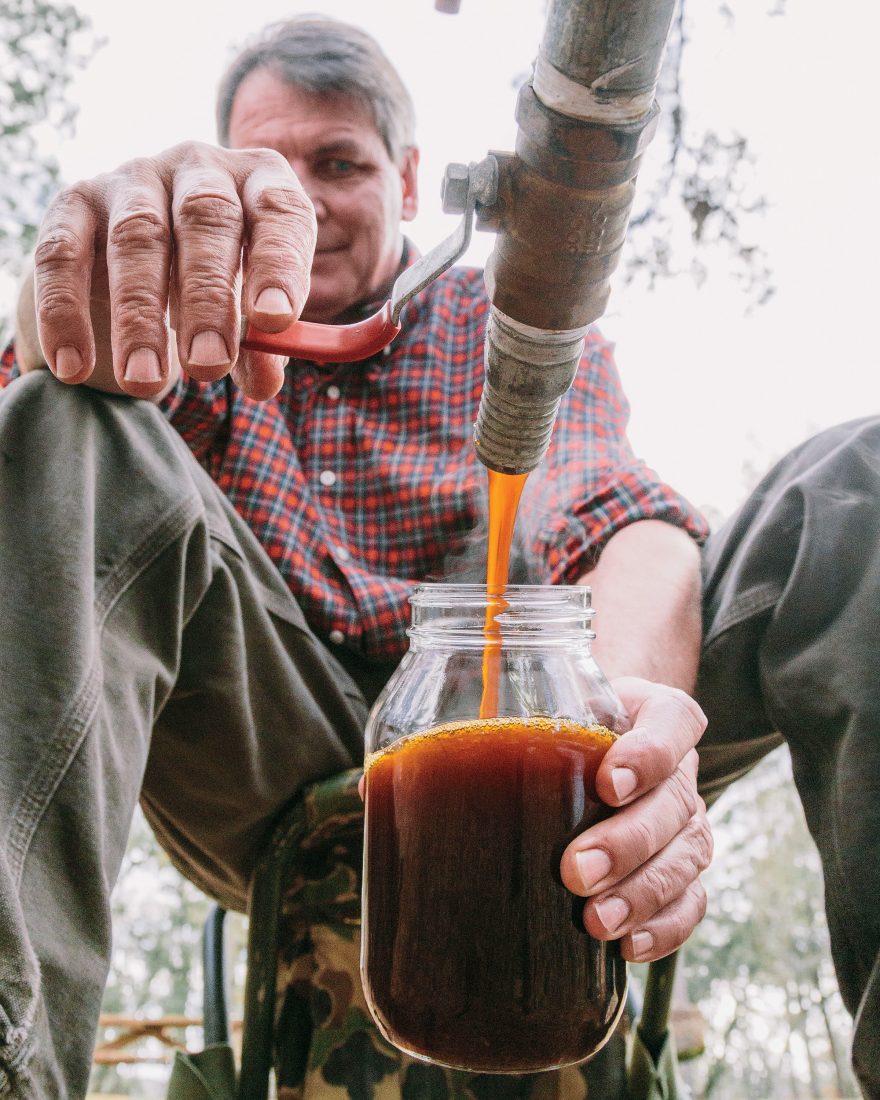
Photo: Peter Frank Edwards
Hagood pours a jarful of syrup.
The consultants stood back as Hagood and Ferguson roamed the kettle’s edge, nervous. They dipped a pan into the syrup old-school and looked for scaling, called for another hydrometer measurement, tasted the edge of the syrup. They sampled another smear of Mary Jane candy. The two paced about like expectant fathers. The consultants crossed their arms in deep concern. Melville’s ghost reappeared. There was lots of talk: I’m not sure it’s ready. I’m pretty sure it’s ready. I’m not sure it’s ready.
At a certain point the anxiety in the air became overwhelming, and, suddenly, Ferguson cried out, “I’m calling it! Pull the fire!” His son kicked open the hearth door and began raking about a bushel of flaming heart pine out from under the pot. That’s the other thing. You cannot take a three-hundred-pound kettle off the fire, so you have to pull the roaring fire out from under the three-hundred-pound kettle.
The eight gallons in the kettle were quickly ladled out by bucket brigade and poured into a fresh cotton sheet stretched over a steel box, drizzling through like a tin-roof rain. At a far corner of the box was a spigot, and not long afterward, we had jarred thirty-two quarts of cane sugar syrup.
Maybank produced a plate with a few pieces of cornbread on it and poured hot syrup on top of the small squares. Everybody sampled, and even the most skeptical consultant saw that it was good. In fact, the batch was declared the best batch they’d ever cooked—a realization that, according to Hagood, miraculously got realized at the end of every batch.

Photo: Peter Frank Edwards
Sweet Success
Syrup drips off a soaked cornbread muffin.
The next day, Hagood and I met in his kitchen and decided to try the syrup in every possible configuration we could come up with. His mother-in-law had earlier made some peanut brittle from the syrup for us to sample. We cooked skewered shrimp brushed with syrup on a grill, and made a salad dressing from syrup. We improvised a bourbon cocktail we christened a Lowcountry Pomegranate Smash. We grilled some elk and some duck breast as well as pheasant and dove that Hagood had shot earlier.
The meal was extraordinary, and it underscored what has been lost in the four-century-long race toward sweeter and sweeter sugars. I’m not knocking sugar crystals. But the more-is-better pursuit of sweetness has driven us to forget the virtues of the milder sugars back down the sweetness scale. I especially found this with the meat and the booze.
Our Pomegranate Smash was fairly tasty, but that was probably because Hagood made it with Pappy Van Winkle. Later I tried the syrup in several variations of julep. All my life, a julep was made with a simple syrup derived from boiling sugar crystals in water. My guess is that somewhere in the past, the original addition was cane syrup. A julep made this way is not as sugary, but it complements the natural smoky sweetness of a good bourbon—and is a drink with numerous, layered flavors. I’ll plant my flag here: The modern julep—made with lots of granulated sugar—is, frankly, a grown-up’s substitute for a college kid’s bourbon and Coke. I still have to work on the color because cane syrup can be dark or light, depending on the batch, and so sometimes the resulting julep looks muddy. Maybe the answer is to stick to the old-timers’ insistence that all juleps be served in cotton-napkin-cossetted silver goblets or not at all.
The other lost flavor was found in the meats. Brushed on, the syrup nicely enhanced the sweeter meats, especially the fowl. Modern efforts to work with the natural sweetness of some meats typically involve dry rubs with brown sugar added. (Brown sugar, by the way, is white granulated sugar cooked in molasses.) I experimented with a number of approaches.
I slathered a beef tenderloin in cane syrup and improvised a rub made out of fine-ground espresso beans, chile powder, paprika, dry mustard, salt, pepper, ground ginger, and garlic powder. Normally, these dry rubs include a hefty shot of brown sugar. I skipped that part because I had coated the meat in syrup. I heated up an empty cast-iron skillet until it was smoking hot and seared the tenderloin. I moved it to my grill, where a really hot charcoal fire was already glowing. I threw a handful of pecan shells on there every few minutes, creating a dense pecan fog. After a few minutes on each side, in direct heat and full smoke, I pulled the tenderloin off when the internal temperature hit 125 degrees—super rare.
The thing about the syrup is that it held the rub onto the meat so that a hairline crust had formed, redolent of coffee and spices combined with a distant hint of sweet and very prominent pecan smoke. The folks who ate this went berserk.
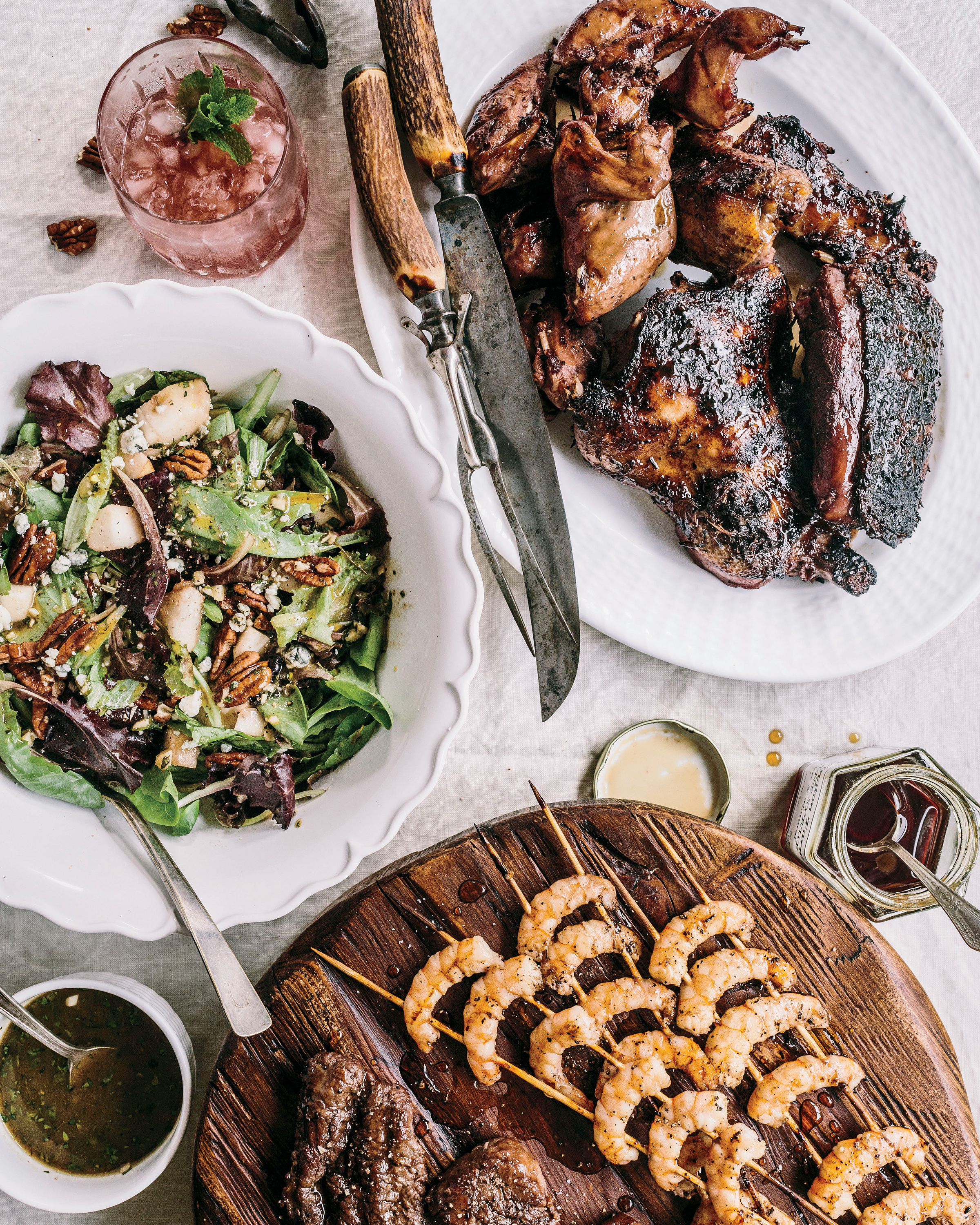
Photo: Peter Frank Edwards
Tasting Time
The author's syrup-slathered feast, with shrimp, elk, game birds, and a Pappy Van Winkled-fueled cocktail.
Two days after that first batch at Lavington, we reconvened in the woods to make a second. This one would be different because it would include some sour cane.
“If you cut the cane after the first frost,” Ferguson said, “then the cane is a bit sour.” He offered a jar of the juice alongside some pre-frost juice, and the difference was remarkable. But once it started cooking and by the end of the day, I’m not sure I could tell the difference.
One of the consultants, Charlie Ratliff, decided to solve the hassle of pouring gallons of liquid into a coffeepot every time we wanted to use the hydrometer. In the intervening forty-eight hours, he had manufactured a perfect aluminum viscosity ladle. It’s a long metal pole ending in a metal cylinder about two inches in diameter—just big enough to let the hydrometer bob without requiring a lot of liquid.
I was sitting on the bench when Hagood and Ferguson were trying to remember another tiny detail of the cooking procedure and, what the hell, they just decided to wing it. “That’s part of the fun of cooking cane syrup,” Maybank said. “You can never quite remember all the things you learned the last time you made it.”


